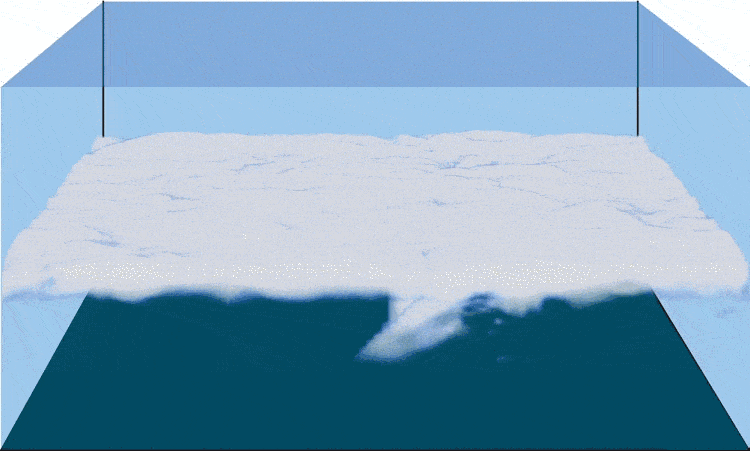
CO2 concentrations larger than 1,200 ppm can disrupt the formation of strato cloud decks, amplifying global warming by as much as 10 degrees Celsius. Credit: simulation by Caltech.
A high-power computer simulation suggests that when CO2 concentrations in the atmosphere pass a certain threshold, some types of clouds could stop forming over tropical oceans. In turn, this would further accelerate global warming, contributing to a vicious circle that would become nearly impossible to break.
No more clouds?
Stratocumulus clouds are low-lying clouds with a wide horizontal structure, resembling cumulus clouds but being much bigger. Their base is well-defined and flat but the upper part of the cloud is ragged due to convection within the cloud itself. Depending on the thickness of the cloud, stratocumulus will take on light to dark gray hues.
Stratocumulus clouds cover about 20% of the tropical oceans and critically affect the Earth’s energy balance: they reflect 30% to 60% of the shortwave radiation incident on them back to space. Like most clouds, they form when warm air rises from the surface and cools at a higher altitude, causing the water vapor to condense.
However, at very high CO2 concentrations, stratocumulus clouds can break apart. Researchers at the California Institute of Technology ran computer simulations on a powerful supercomputer for two years, showing that cloud formation collapsed when CO2 concentration reached about 1,200 parts per million (ppm) due to excessive incoming radiation. As a result, there are little to any clouds left to reflect radiation, contributing to as much as 8°C or 10°C to warming in the subtropics — that’s in addition to any kind of warming caused by such a hellish amount of carbon in the atmosphere.
Of course, if the planet’s atmosphere ever registers over 1,200 ppm of CO2 we’re already screwed. Any additional feedback mechanisms can be seen as a well-deserved bonus. According to NOAA, average CO2 levels were 411 ppm in 2018, up from 280 ppm in the mid-19th century. Since the advent of the Industrial Revolution, global average temperatures have already risen by 1°C as a result of all the carbon human activities have dumped in the atmosphere.
“I think and hope that technological changes will slow carbon emissions so that we do not actually reach such high CO2 concentrations. But our results show that there are dangerous climate change thresholds that we had been unaware of,” says Caltech’s Tapio Schneider, lead author of the new study published in Nature.
Of course, this is just a simulation — one of a notoriously challenging process to model, namely cloud formation — and the 1,200 ppm threshold is more of a rough estimate rather than a firm figure. Nevertheless, the findings are intriguing, revealing a potentially new feedback mechanism that scientists hadn’t consider until now.
The study could also solve a longstanding ancient mystery. The geological record shows that about 50 million years ago, in the Eocene, the Arctic was ice-free and inhabited by crocodiles. For the Arctic to be that warm, CO2 levels would have to be above 4,000 ppm — that’s twice the concentration known during the time period. It could be that the loss of stratus cloud decks could explain the Eocene hotspot — and in the not so distant future, crocs might be back in the Arctic thanks to us.









